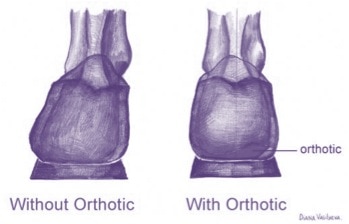Patellofemoral or Knee Cap Pain and Orthotics: Is there a Connection between the Foot and Knee?
As I’ve blogged before, we’re big believers that one of the most over looked things in patients with joint problems is the how they go that way. This is discussed in detail in our medical practice’s book on the use of stem cells, needle based therapies, and biomechanics to help patients avoid surgery, Orthopedics 2.0. While many practitioners such as podiatrists, physical therapists, and chiropractors have long believed that prescription kneecap pain orthotics can get rid of pain under the knee cap (patellofemoral pain), the published data has been less clear. The idea behind why orthotics might help knee cap pain is that they can keep the foot from pronating (collapsing inward). When the foot pronates, this turns the leg bones and misaligns the groove for the knee cap. This week a study arrived that may clarify the connection between foot problems and the knee cap. The study looked at Danish high school students (which is it’s first weakness as most of the patients with knee cap pain aren’t in high school, but instead middle aged and usually women). The study did find an association between too much foot mobility (foot pronation) and knee cap pain. The authors concluded that there is likely a connection between foot position and knee cap pain (at least in high school students). On the other hand, large reviews of all the data on whether orthotics can be used to treat knee cap pain are conflicting (but so is the data on everything else including almost all foot surgeries). The upshot? While the study has some limitations, if you have chronic knee cap pain and nothing else has helped, orthotics may be something to consider.

If you have questions or comments about this blog post, please email us at [email protected]
NOTE: This blog post provides general information to help the reader better understand regenerative medicine, musculoskeletal health, and related subjects. All content provided in this blog, website, or any linked materials, including text, graphics, images, patient profiles, outcomes, and information, are not intended and should not be considered or used as a substitute for medical advice, diagnosis, or treatment. Please always consult with a professional and certified healthcare provider to discuss if a treatment is right for you.

